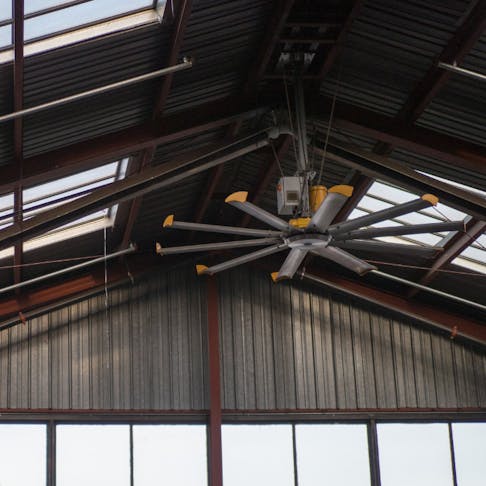4 Tips for Controlling Temperature on a Factory Floor
The goal of plant climate control is to prevent excessive heat from affecting not just production and laboratory equipment, but also the health and safety of the workforce, both of which are crucial to the productivity and efficiency of a manufacturing operation. Here are four tips for controlling the temperature on a factory floor.

Controlling temperature in a manufacturing facility during the hot summer months can be challenging and a recipe for disaster. While warm, sunny conditions may signal that it’s a good time to hit the beach, for manufacturers it’s time to focus on cooling the factory floor. The goal of plant climate control is to prevent excessive heat from affecting not just production and laboratory equipment, but also the health and safety of the workforce, both of which are crucial to the productivity and efficiency of a manufacturing operation. Here are four tips for controlling the temperature on a factory floor.
1. Regulate Airflow with Fans
Hot air rises and on the factory floor, heat is generated by production processes, manufacturing machinery, and production workers. Air heated at ground level collects near the building's ceiling initially. But if the heated air cannot escape, the hot air layer extends lower and lower until the entire facility is too warm. Hot air must have the means to escape or be dispersed, or the facility will slowly turn into a sauna! One way to disperse hot air is by using fans.
Keeping the air moving through a facility can be an effective means to cool a factory floor, as it reduces the perceived temperature by dispersing the hot pockets of air described above. This is a form of convection cooling that carries heat away from machines and people. High volume, low speed (HVLS) fans are ideal for this. Compared to standard ceiling fans or oscillating fans bought from a home-improvement store, HVLS fans are massive in size, CFM moved, and power draw. These industrial fans help evenly distribute air throughout the facility. Placing these fans at strategic points on the ceiling of your facility, coupled with industrial fans or other means that remove the hot air out of the facility, can have a profound impact on controlling the temperature on a factory floor.
2. Control Temperature with Evaporative Cooling
Another tip for controlling temperature is the use of evaporative cooling, where the process of evaporation absorbs heat to cool air. In arid climates, fans and traditional air conditioning may not always be the best solution to cool a factory floor. With evaporative cooling, a fan inside an evaporative cooler draws in hot air that passes over a cooling pad. This cooling pad is kept wet by a circulating stream of water within the system. As the warm air passes over the pad, the water on the pad evaporates and cools the air. That air is then recirculated into the facility, lowering its temperature.
Facilities in areas with low humidity can benefit significantly from evaporative cooling since cooling and adding humidity to the air happen simultaneously. In more humid climates, evaporative cooling may not be able to sufficiently cool the air. Regardless, evaporative cooling may be an ideal solution as it is generally more affordable and more environmentally friendly than traditional air conditioning.
3. Air Conditioning is Cool
Centralized air conditioning (AC) can be used in humid and arid climates. Unlike evaporative cooling, AC uses refrigerants to cool the air. In both cases, fans draw warm air into the system - the difference with evaporative cooling is that the air then passes over a series of coils containing refrigerant. These refrigerants evaporate when the warm air passes over them. As it passes over, the air is cooled and circulated back into the facility while the refrigerant gas byproduct is recirculated through the system and converted back into liquid through a series of thermodynamic processes to be used again.
Air conditioning works well for smaller areas like homes or offices, but for large manufacturing plants, a series of AC units or more powerful AC units are needed to cool the facility effectively. Some manufacturers opt to use these more powerful units whereas others use a centralized AC system coupled with portable AC units to cool areas that are prone to excessive heat. Both approaches can be very practical in controlling temperature.
4. Establish Different Cooling Zones in the Facility
Different areas of a building - i.e. an office or a manufacturing floor - generally don’t have the same cooling requirements. Controlling temperature by establishing different cooling zones in a facility can be efficient in terms of both cost and power consumption. By using programmable thermostats for each zone, manufacturers can easily monitor and adjust temperatures throughout a facility as needed. This helps ensure that no excess power is being consumed by the various cooling units within a facility.
Excessively hot temperatures in manufacturing facilities can be a recipe for disaster. It can cause machinery to operate more slowly or even malfunction entirely. Hot temperatures can also affect not just the productivity of your staff, but also their health and safety. With the four points described above, controlling temperature on a manufacturing floor, especially during the warmer summer months, can be a breeze.
